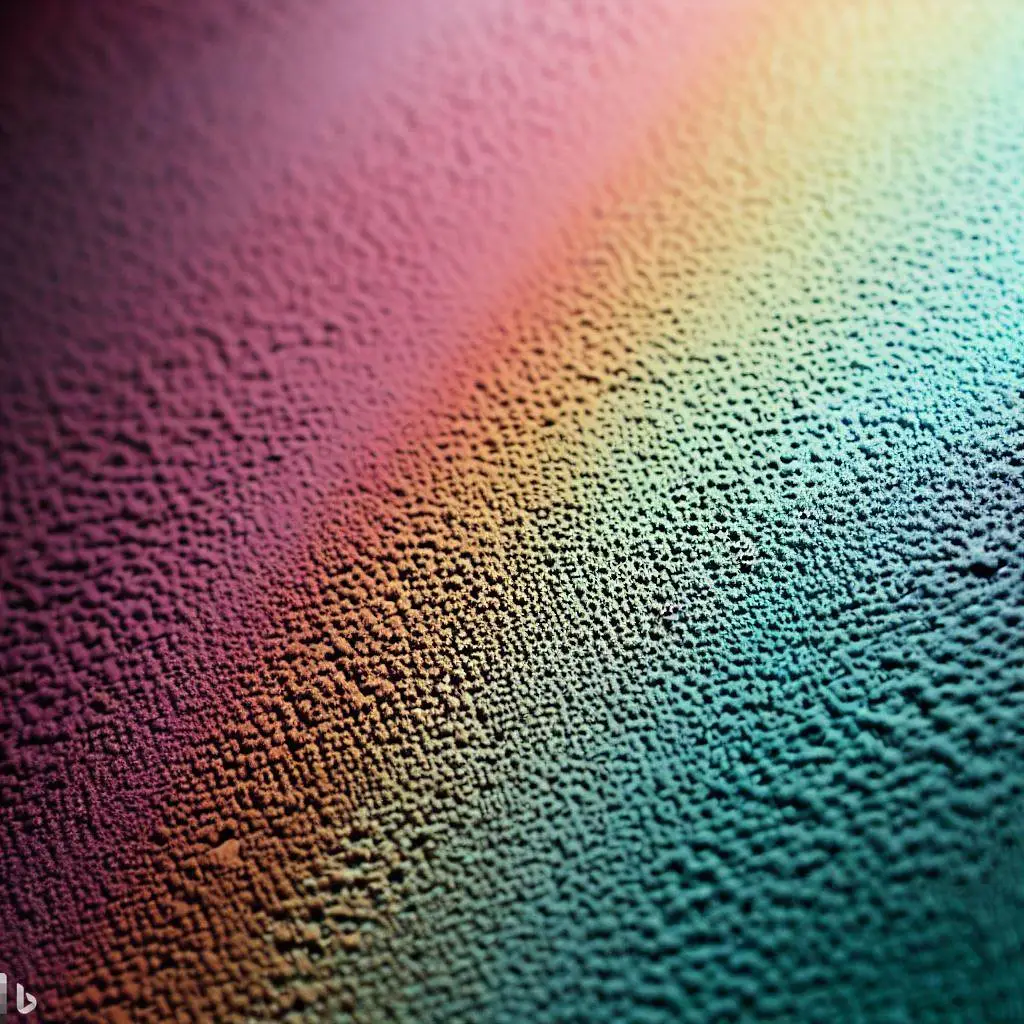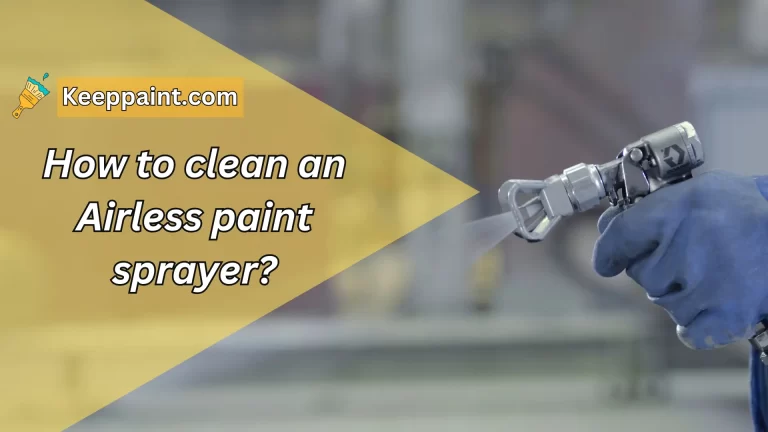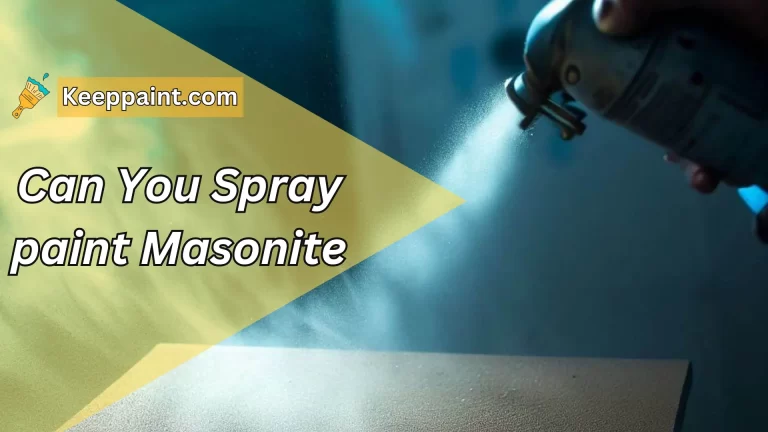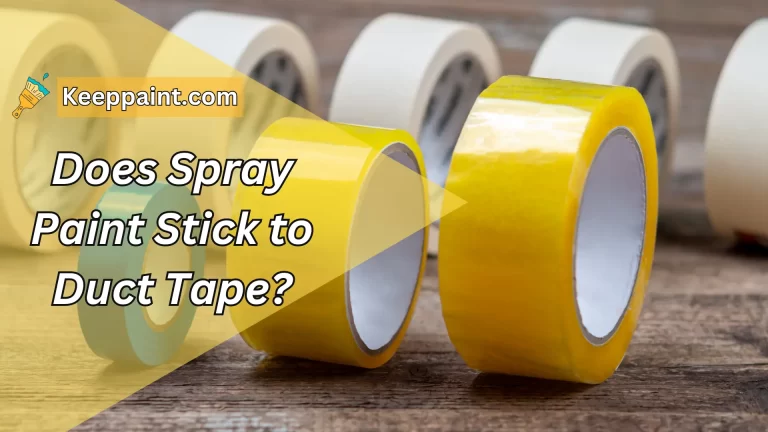Are you looking to add some texture and dimension to your next DIY project? We will let you know how to easily create a unique and visually stunning finish on just about any surface. Whether you’re giving new life to an old piece of furniture or adding some flair to your home decor, textured spray paint is the perfect solution.

What is textured spray paint?
Textured spray paint is a unique type of paint that adds texture and dimension to surfaces. Unlike regular spray paint, which creates a smooth finish, textured spray paint contains additives that create a gritty or raised surface. This allows you to achieve various effects such as stone, sand, or even snow-like textures on different objects.
With textured spray paint, you can transform plain surfaces into visually interesting and tactile ones. It’s perfect for adding depth and character to furniture, home decor items, crafts projects, or even automotive parts. The possibilities are endless when it comes to creating a kind textured finishes with this versatile painting technique.
Types of textured spray paint:
Textured spray paint comes in various types, each offering a unique finish and texture. One popular type is the stone textured spray paint, which creates a realistic stone like appearance on surfaces. This type of spray paint is often used to add depth and dimension to walls or furniture.
Another common type is sand textured spray paint, which contains small particles that create a rough sandy texture when applied. This can be great for creating an interesting visual effect on surfaces like metal or wood.
There are also metallic textured spray paints available, which contain metallic flakes that give off a shimmering and reflective finish. These paints are perfect for adding a touch of glamour to any project, whether it’s home decor or DIY crafts. With so many options available, you can easily find the right textured spray paint to suit your creative needs!

Characteristics of textured paint:
Textured paint is known for its unique appearance and tactile feel, adding depth and dimension to any surface. One of the key characteristics of textured paint is its ability to create a rough or raised surface, mimicking the look and feel of materials like stone or stucco. This texture not only enhances the visual appeal but also provides a practical benefit by covering up imperfections on walls or other surfaces.
In addition to its distinctive texture, another characteristic of textured paint is its versatility. It can be applied to various surfaces such as wood, metal, drywall, or even plastic. Whether you want to transform your interior walls into an eye-catching feature or add an interesting element to furniture pieces, textured paint offers endless possibilities for creative expression. Its ability to adhere well to different materials ensures a long-lasting finish that withstands wear and tear over time.
Advantages of Textured Spray Paint
Faster application:
When it comes to painting projects, time is often a crucial factor. Nobody wants to spend hours laboring over a single coat of paint. That’s where textured spray paint comes in. One of the biggest advantages of using this type of paint is its faster application process.
Unlike traditional brush or roller methods, textured spray paint can be applied quickly and evenly with just a few passes from the can. With its fine mist and wide coverage, you can cover large surfaces in no time at all.
Not only does this save you valuable time, but it also reduces the risk of streaks or uneven patches that may occur when using brushes or rollers. Plus, since textured spray paint dries quickly, you can move on to other tasks or apply additional coats sooner than with traditional methods. It’s an efficient way to achieve professional-looking results without spending hours on end!
Easier cleanup:
Easier cleanup is one of the significant advantages of using textured spray paint. Unlike traditional paint, which can leave behind a messy clean-up process, textured spray paint offers a simpler and more convenient solution.
When using textured spray paint, there is no need to deal with brushes or rollers that require extensive cleaning afterward. With just a quick shake and press of the nozzle, you can start applying the texture directly onto your desired surface. This eliminates the hassle of dealing with multiple tools and equipment during painting projects.
Moreover, textured spray paint also dries quickly, reducing the risk of accidental smudges or smears while cleaning up. Once dry, any excess or overspray can be easily wiped away with minimal effort. This not only saves time but also ensures a neat finish without any residue left behind on surrounding surfaces.
In conclusion (to this blog section), easier cleanup is undoubtedly a benefit worth considering when choosing textured spray paints for your next project!
Durability & protection:
One of the key advantages of textured spray paint is its ability to provide durability and protection to various surfaces. The unique texture created by the spray paint not only enhances the aesthetic appeal but also adds an extra layer of toughness.
The textured finish can withstand everyday wear and tear, making it ideal for high-traffic areas or objects that may be subjected to rough handling. Whether you’re using it on furniture, metal surfaces, or outdoor fixtures, textured spray paint offers increased resistance against scratches, chipping, and fading. This added durability ensures that your painted surface remains intact and looking great for a longer period of time.
Moreover, textured spray paint also provides protection against environmental elements such as moisture and UV rays. The texture helps create a barrier that shields the underlying material from potential damage caused by water infiltration or sun exposure. This makes it suitable for both indoor and outdoor applications where weather resistance is crucial. With its ability to enhance durability while offering protective qualities, textured spray paint is a versatile option for adding both style and substance to your projects.
Unique aesthetic appeal:
One of the key advantages of textured spray paint is its unique aesthetic appeal. Unlike regular flat or glossy finishes, textured spray paint adds depth and dimension to any surface. The texture can range from fine sand-like patterns to more pronounced raised designs, giving your project a visually interesting and tactile quality.
The textural element provided by this type of paint creates an eye-catching effect that instantly transforms ordinary surfaces into something extraordinary. Whether you want to add a rustic look to furniture, create a stone-like appearance on walls, or give metal objects a weathered patina, textured spray paint offers endless possibilities for enhancing the visual appeal of your projects. With its ability to mimic various materials and textures, it allows you to achieve stunning results that are both visually appealing and unique in their own right.
How to Use Textured Spray Paint
Using textured spray paint is a simple and effective way to add depth, dimension, and texture to your surfaces. To achieve the best results, follow these easy steps:
Application techniques:
When it comes to using textured spray paint, there are a few key techniques that can help you achieve the desired texture on your surfaces. The first technique is the “splatter” method, where you hold the can about 12 inches away from the surface and quickly press and release the nozzle to create a splattered effect. This technique works well for creating a rough or speckled texture.
Another application technique is known as “dusting.” With this method, you lightly mist the paint onto the surface by holding the can farther away (around 18-24 inches) and using short bursts of spray. This creates a finer texture with less buildup.
Remember to experiment with different techniques and distances to find what works best for your project. It’s also important to apply multiple thin coats rather than one thick coat for optimal texture coverage. By mastering these application techniques, you’ll be able to achieve professional-looking textured finishes in no time!
Preparing the surface:
Preparing the surface is an important step when using textured spray paint. Before applying the paint, it’s crucial to ensure that the surface is clean and smooth. Start by removing any dirt, dust, or debris from the area you plan to paint. You can use a brush or a cloth to wipe away any loose particles.
Next, make sure to sand down any rough patches on the surface. This will help create a smoother base for the textured spray paint to adhere to. Use fine-grit sandpaper and gently rub in circular motions until the surface feels even and free of imperfections.
Once you have cleaned and sanded the surface, it’s essential to protect surrounding areas from overspray. Cover nearby objects with plastic sheets or newspaper before starting your painting project. Taking these steps before applying textured spray paint will ensure better adhesion and a more professional looking finish.
Tips for achieving desired texture:
When using textured spray paint, achieving the desired texture on your surface can make all the difference. Here are a few tips to help you achieve the texture you want:
1. Experiment with distance: The distance between the nozzle of the spray can and your surface will affect the texture outcome. For a finer texture, hold the can closer to the surface. If you want a rougher or more pronounced texture, hold it further away.
2. Practice your technique: Before applying textured spray paint to your final project, practice on a test surface or piece of cardboard first. This will give you a chance to perfect your spraying technique and get comfortable with creating different textures.
Remember that patience is key when working with textured spray paint. Take your time and don’t rush through the application process for best results.
Maintaining Textured Spray Paint
Keeping your textured spray paint looking its best is essential for preserving the unique aesthetic appeal it provides to your surfaces. To ensure longevity, regular cleaning and care are necessary. Start by gently wiping down the textured surface with a soft cloth or sponge and mild detergent solution. Avoid using abrasive cleaners or scrub brushes that could damage the texture.
In addition to routine cleaning, consider applying a protective wax coating to enhance durability and prevent scratches or stains. Choose a wax specifically designed for textured surfaces and follow the manufacturer’s instructions for application. Regular touch-ups may also be required over time, especially if any areas become damaged or worn. Use matching spray paint to carefully repair any imperfections and maintain a consistent look throughout your project.
Cleaning and caring for textured surfaces:
Cleaning and caring for textured surfaces is an essential part of maintaining the longevity and appearance of your textured spray paint. To keep these surfaces looking their best, it’s important to follow a few simple cleaning and care practices.
When cleaning textured surfaces, avoid using abrasive cleaners or harsh scrub brushes as they can damage the texture. Instead, opt for a soft cloth or sponge and mild soap mixed with warm water. Gently wipe down the surface in circular motions to remove any dirt or grime. Afterward, rinse with clean water and pat dry with a soft towel.
In addition to regular cleaning, it’s also important to protect your textured surfaces from potential damage. Avoid placing sharp objects directly on the surface that could scratch or chip the paint. If you notice any chips or scratches in the texture, consider touching up those areas with matching spray paint to maintain consistency in appearance. By following these simple cleaning and care tips, you can ensure that your textured surfaces stay beautiful for years to come!
Waxing and protecting textured surfaces:
Waxing and protecting textured surfaces is an important step in maintaining the longevity and appearance of your textured spray paint. After applying the texture, it’s crucial to seal it with a protective wax or sealant to ensure its durability.
To begin, make sure the surface is clean and dry before applying any wax or sealant. Use a soft cloth or sponge to gently apply the product onto the textured surface, making sure to cover all areas evenly. Allow it to dry completely according to the manufacturer’s instructions.
Once dried, you can then buff the surface with a clean cloth for an added shine. This will not only protect your textured paint finish from scratches and UV damage but also make cleaning easier as dirt and grime won’t adhere as strongly. Regularly reapply wax or sealant every few months or as needed for ongoing protection.
Touch-ups and repairs:
Touch-ups and repairs are an important part of maintaining textured spray paint surfaces. Over time, these surfaces may experience wear and tear or minor damage that needs to be addressed. Fortunately, touch-ups and repairs can be relatively simple with the right tools and techniques.
When it comes to repairing textured spray paint, it’s crucial to match the texture as closely as possible. Start by cleaning the damaged area thoroughly and allowing it to dry completely. Then, use a small brush or sponge to carefully apply a new layer of textured spray paint over the damaged spot. Take your time and ensure that you blend the new texture seamlessly with the surrounding area for a seamless finish.
For larger areas of damage or more significant repairs, you may need to sand down the affected area before applying a fresh coat of textured spray paint. This will help create a smooth surface for better adhesion of the new paint layer. Once again, take care in matching both color and texture when making these repairs.
Remember, regular maintenance is key in preventing major damages that require extensive repairs. By addressing any minor issues promptly through touch-ups and repairs, you can prolong the lifespan of your textured spray painted surfaces!

Frequently Asked Questions about Textured Spray Paint
What is the difference between textured paint and textured spray paint?
Textured paint and textured spray paint are both used to create unique finishes on surfaces, but there are some key differences between the two.
Traditional textured paint is applied with a brush or roller, requiring more time and effort for application. It typically comes in cans or buckets and needs to be mixed before use. On the other hand, textured spray paint is specifically designed for easy application with a canister that sprays out the textured formula evenly onto the surface.
The main advantage of using textured spray paint over traditional textured paint is its convenience and speed. With just a few simple sprays, you can achieve an even texture without the need for brushes or rollers. This makes it ideal for DIY projects where efficiency is important.
Additionally, while traditional textured paints may require multiple coats to achieve desired texture levels, most textured spray paints provide excellent coverage in just one coat. This saves both time and money by reducing material consumption.
Although both types of paint offer similar effects, choosing between them will depend on factors such as ease of application, time constraints, and budget considerations
How long does textured spray paint last?
Textured spray paint is known for its durability and long-lasting finish. When properly applied and maintained, textured spray paint can last for many years.
The lifespan of textured spray paint depends on various factors such as the quality of the paint, the surface it is applied to, and the environmental conditions it is exposed to. High-quality textured spray paints tend to have better adhesion and resistance to fading or chipping over time.
Additionally, surfaces that are properly prepared before applying the texture spray paint will also contribute to its longevity. It’s important to clean and prime the surface beforehand to ensure proper adhesion. Regular cleaning and maintenance can also help extend the life of textured spray paint.
With proper application and care, you can expect your textured spray painted surfaces to maintain their appearance for several years without significant wear or deterioration.
Can textured spray paint be used on different surfaces?
Textured spray paint is a versatile option that can be used on various surfaces, making it suitable for a wide range of projects. Whether you want to add texture to wood, metal, plastic, or even fabric, textured spray paint offers a convenient solution.
The key to achieving optimal results is to ensure the surface is clean and free from dust or debris before applying the textured spray paint. Additionally, different types of surfaces may require specific preparation techniques such as sanding or priming to promote better adhesion and durability. By following the manufacturer’s instructions and taking these necessary steps, you can confidently use textured spray paint on different surfaces for stunning textural effects in your DIY projects.
Conclusion
Textured spray paint is a versatile and innovative product that allows you to add depth, dimension, and texture to any surface. Whether you’re looking to create a unique aesthetic appeal or enhance the durability of your project, textured spray paint provides endless opportunities.
With its fast application and easy cleanup, textured spray paint not only saves time but also delivers exceptional results. The variety of textures available gives you the freedom to choose the perfect finish for your desired look.
To achieve the best results with textured spray paint, it’s important to properly prepare the surface and use appropriate application techniques. This will ensure that the texture adheres evenly and lasts longer.
Once applied, maintaining textured surfaces is relatively simple. Regular cleaning and proper care will help preserve their appearance while waxing or protecting them can provide an extra layer of protection against wear and tear.
While textured spray paint can be used on various surfaces like wood, metal, plastic, or even fabric; it’s essential to consider compatibility before starting any project.
Whether you’re a DIY enthusiast or a professional painter looking for new ways to elevate your projects’ aesthetics and longevity – textured spray paint is definitely worth exploring! Its versatility in terms of finishes coupled with easy application makes it an excellent choice for anyone looking to add texture in their creative endeavors. So go ahead and unleash your creativity with this fantastic tool!






